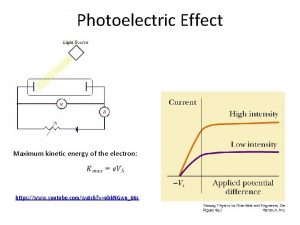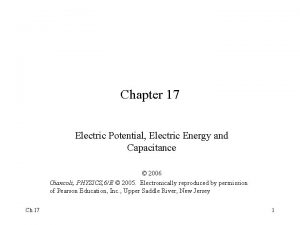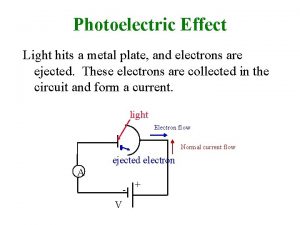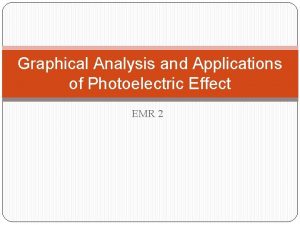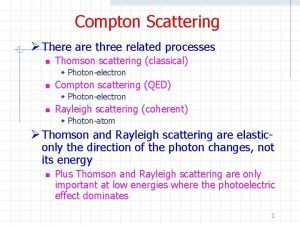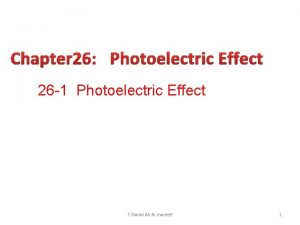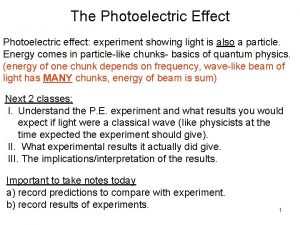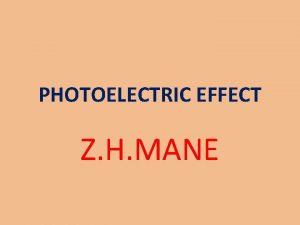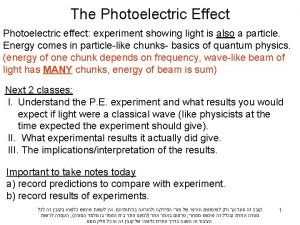Photoelectric Effect Maximum kinetic energy of the electron






- Slides: 6

Photoelectric Effect Maximum kinetic energy of the electron: https: //www. youtube. com/watch? v=ubk. NGwu_66 s

Photoelectric Effect: Equation Work function = φ

Photoelectric Effect • https: //www. youtube. com/watch? v=ubk. NGw u_66 s • https: //www. youtube. com/watch? v=w. FY 9 Zv. U m. M 5 o (UC Berkeley) • https: //www. youtube. com/watch? v=7 w. F 8 Jm 5 Zhvk

Applications • https: //www. youtube. com/watch? v=nr. CEVb. S 2 oeo

Compton Effect A quantum of light has linear momentum (Einstein 1916). For a photon with energy hf, the magnitude of that momentum is: In 1923, Arthur Compton, carried out an experiment that supported the view that both momentum and energy are transferred via photons. He arranged for a beam of x rays of wavelength λ to be directed onto a target made of carbon, as shown. An x ray is a form of electromagnetic radiation, at high frequency and thus small wavelength. Compton measured the wavelengths and intensities of the x rays that were scattered in various directions from his carbon target.

Compton Shift Figure below shows his results. Although there is only a single wavelength (λ = 71. 1 pm) in the incident x-ray beam, we see that the scattered x rays contain a range of wavelengths with two prominent intensity peaks. One peak is centered about the incident wavelength λ, the other about a wavelength λ′ that is longer than λ by an amount Δλ, which is called the Compton shift. The value of the Compton shift varies with the angle at which the scattered x rays are detected and is greater for a greater angle. Derivation The quantity h/mc in is a constant called the Compton wavelength. Its value depends on the rest mass m of the particle from which the x rays scatter.
